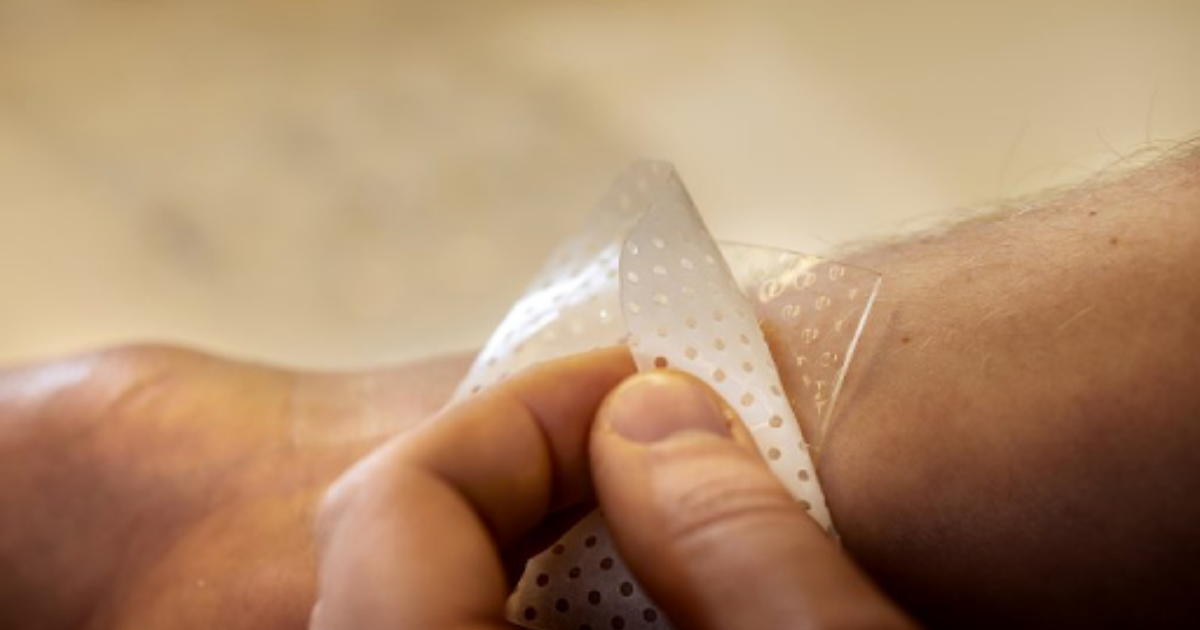Nobody likes scars on their body. Whenever our skin is injured, be it by accident or from any surgery, our body works to repair the wound. As our skin heals, a scar may form, as this is a natural part of the healing process. But the appearance of a scar often depends on how well the wound heals. With the advent of new innovations in hydrogel technology, wound care can be transformed.
Using revolutionary technology, hydrogel wound care can help prevent unnecessary infection and heal wounds before they become chronic. The benefits of employing antimicrobial peptides in wound care have been researched for years, but unfortunately as the peptide degrades quickly upon contact with bodily fluids it was impossible to actually employ as it would simply break down before it could have a positive impact. However, researchers at Chalmers University of Technology, Sweden, have developed a new material, a hydrogel, that suspends and protects the peptides, meaning they do not break down as readily. This innovative new technology will allow peptides to be used in dressings, as wound care, for the very first time and due to the unique nature of the peptides this technology can even be used to treat wounds that have antibiotic resistant bacteria.
The big challenge when managing and treating wounds is infection. If the wounds get infected, it can greatly hamper the healing process and sometimes you can have such a severe infection that it could become fatal. Another challenge is that of chronic wounds, these are wounds that never heal, sometimes growing, causing extended discomfort to the patient and often requiring surgical intervention. Chronic wounds are especially difficult when dealing with patients who have other diseases, such as diabetes, that affect their ability to heal. Also, if patients are on certain drug treatments that limit their immune system their wounds become more difficult to treat. When combined, chronic wounds and the risk of infection are the biggest challenges we face within wound care.
The hydrogel focuses on eradicating bacteria that is present in the wound and in the surrounding skin and it is very effective as it has a rapid, almost immediate, killing effect. It is what is known as a contact killing device, so as soon as the bacteria gets in contact with the device, it is killed. It also attaches to the surface, therefore as you remove the wound patch you also remove the bacteria. One of the key benefits here is that it is very selective towards bacteria, but at the same time, it has a broad efficiency when it comes to different types of bacteria including gram-negative, gram-positive or resistant strains. It has also been proven that it has very low toxicity, so it does not cause irritation or pain when applied to the skin. Low toxicity is highly beneficial when healing wounds because if a treatment has any toxicity present, it can affect the tissue-forming cells and hamper the healing process. Furthermore, because it is a hydrogel that contains a lot of water, it creates a moist environment for the wound, which is ideal for promoting healing.
It is a quicker process. As a device it does not leach out any substance into the wound, ensuring that it stays as a local effect and does not need to be taken up by the body in any way. And because of that it is not dependent on the release, you do not need to build up a certain dosage or certain concentration, which is a common thing with many other devices that do release substances, in which you must reach a specific therapeutic dosage before the product will work effectively.
Source: https://www.healtheuropa.eu/

